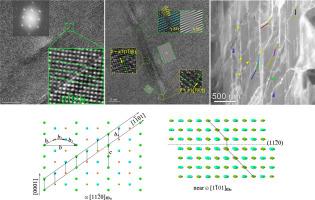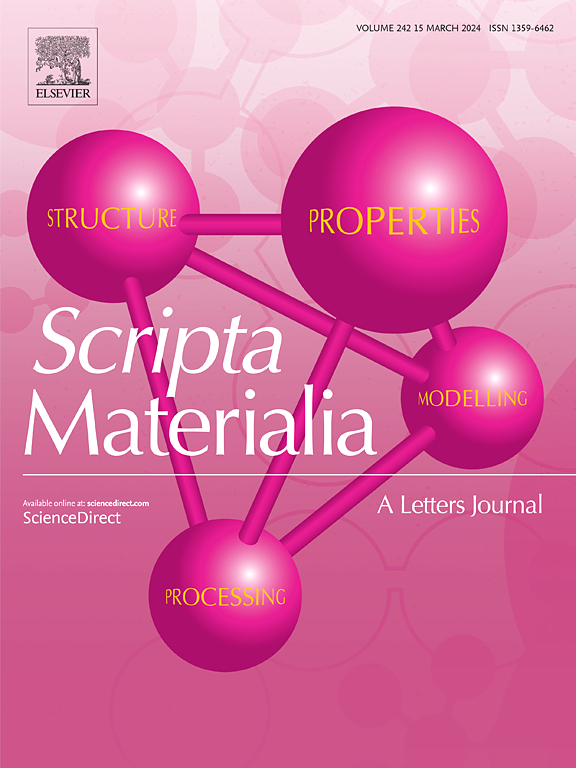有序B82-ω - o相的变形机理
IF 5.6
2区 材料科学
Q2 MATERIALS SCIENCE, MULTIDISCIPLINARY
引用次数: 0
摘要
ω结构是Ti和TiAl合金中常见的小尺度结构,对其力学性能有重要影响。然而,由于其尺寸小,对其变形机理的研究很少。本研究通过热处理制备了含有大规模有序B82 ωo相晶粒的TiAl合金,并对其室温变形机理进行了研究。ω 0相的变形主要发生在棱柱滑移中< a >型和< c + a >型,锥体滑移中< c + a >型。棱柱位错可以分解成部分位错,并伴有复杂的层错(CSF)。相比之下,基底滑移在应用条件下更难以激活。采用密度泛函理论(DFT)方法计算了单ωo相的弹性特性。结果表明,ωo相具有较强的弹性各向异性,与实验结果吻合较好。本文章由计算机程序翻译,如有差异,请以英文原文为准。

Deformation mechanisms of the ordered B82-ωo phase
ω structure is commonly observed in Ti and TiAl alloys with a small scale and has a significant impact on their mechanical properties. However, its deformation mechanisms are scarcely investigated due to the small sizes. In this study, a TiAl alloy containing large-scale ordered B82-ωo phase grains was produced through heat treatment, and its room-temperature deformation mechanisms were investigated. Deformation in the ωo phase primarily occurs through 〈a〉 type and 〈c + a〉 type in prismatic slip, and 〈c + a〉 type in pyramidal slip. Prismatic dislocations can dissociate into partial dislocations accompanied by complex stacking faults (CSF). In contrast, basal slip is more difficult to activate in the applied conditions. The elastic properties of the single ωo phase were calculated by Density Functional Theory (DFT) method. The results show that the ωo phase has a strong elastic anisotropy, which fits well with the experimental results.
求助全文
通过发布文献求助,成功后即可免费获取论文全文。
去求助
来源期刊

Scripta Materialia
工程技术-材料科学:综合
CiteScore
11.40
自引率
5.00%
发文量
581
审稿时长
34 days
期刊介绍:
Scripta Materialia is a LETTERS journal of Acta Materialia, providing a forum for the rapid publication of short communications on the relationship between the structure and the properties of inorganic materials. The emphasis is on originality rather than incremental research. Short reports on the development of materials with novel or substantially improved properties are also welcomed. Emphasis is on either the functional or mechanical behavior of metals, ceramics and semiconductors at all length scales.
 求助内容:
求助内容: 应助结果提醒方式:
应助结果提醒方式:


